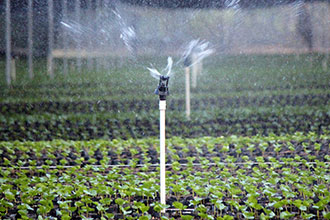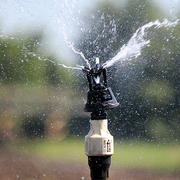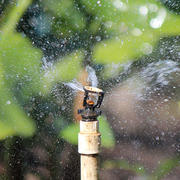
Is overhead irrigation a system of the past? We certainly don’t think so!
Drip irrigation systems may be highly efficient in water use, but new overhead sprinklers are almost as water and energy efficient.
Most people have strong opinions about drip and overhead irrigation systems.
Ask a group of growers about it and you will probably hear widely different opinions. Some say that sprinklers could never be as efficient as drip. Other say that drip is incredibly expensive or that it is only good for some fields and crops.
In reality, both overhead and drip are extremely efficient irrigation systems. Choosing one over the other boils down to priorities and farm management practices.
RELATED: Farm Irrigation Systems with Low-Pressure Sprinklers: Save Energy and Water
In recent years, drip irrigation systems have gotten a strong fan base due to their low flow rates and ability to save water. Strong advocates like the Maine Organic Farmers and Gardeners Association’s claim that a correctly installed drip system can use 50 to 80% less water compared to sprinklers. This makes it a very attractive option for growers in water-restricted locations or for growers who simply want to go green.
To its benefit, drip irrigation does indeed save water and energy. Still, growers looking for versatility, lower overhead costs and high yields large enough to feed a growing population may be better off sticking with overhead irrigation.
Advantages
- Visible confirmation of system uniformity
- Larger area of coverage
- Long product life (often over 10 years)
- Used for germination, fertigation, chemigation and frost control
- Short irrigation intervals
- Lower maintenance costs
Disadvantages
- Higher potential for evaporation and wind drift issues compared to drip
- Waters both crops and weeds
- Cannot be used on crops susceptible to foliar diseases
- Higher potential for runoff and erosion compared to drip



